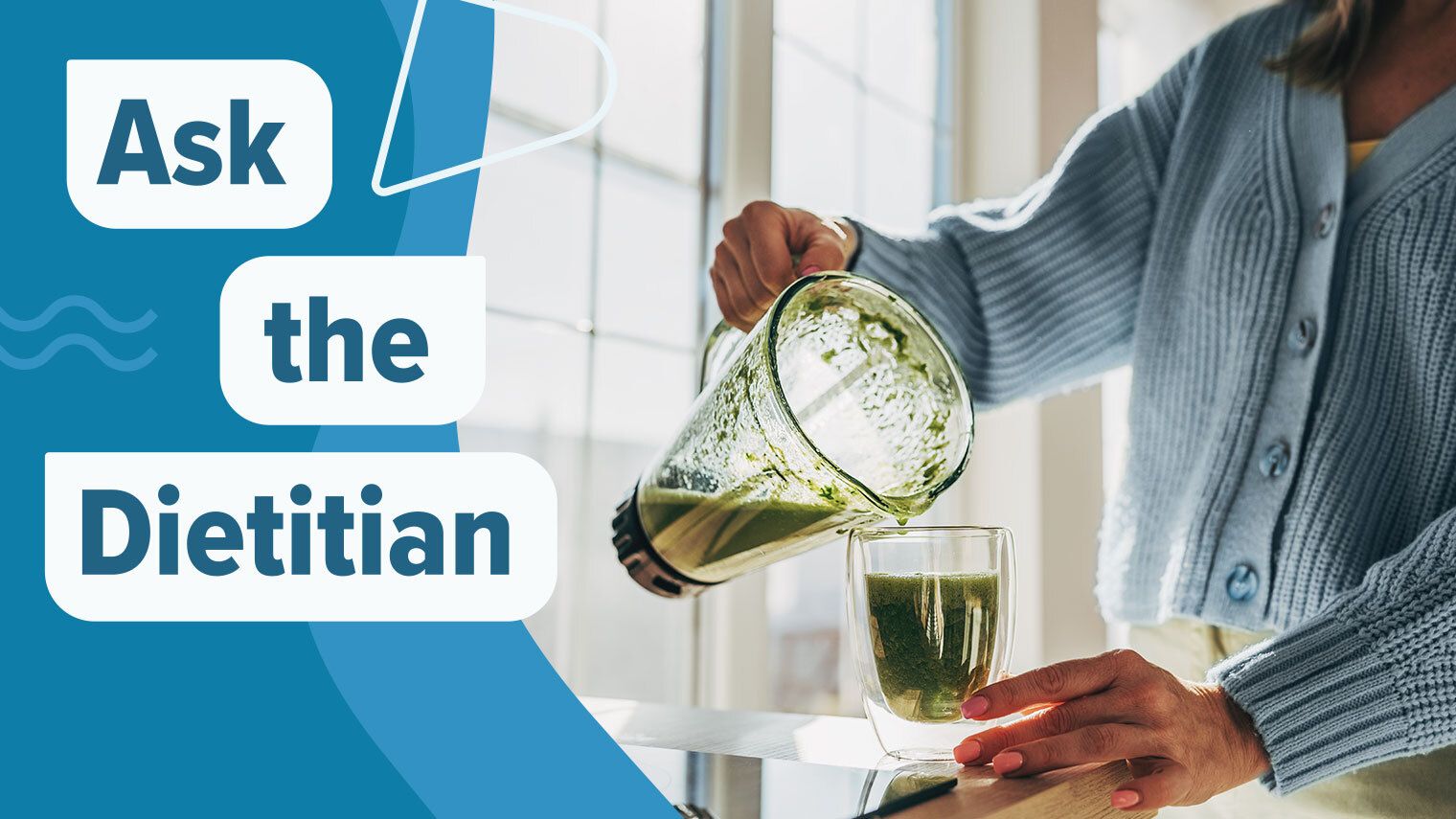Ask the Dietitian: Are Smoothies a Healthy Choice for People with Diabetes?
November 10, 2023
Content created for the Bezzy community and sponsored by our partners. Learn More

Dear Jillian,
I love smoothies, but I want to know if I’m still getting enough fiber by blending the fruits and veggies. Are smoothies a nutritious option for me?
— Bezzy Type 2 Diabetes Member
If you live with diabetes, you’re probably used to hearing that you should avoid certain foods and drinks that spike your blood sugar. Drinking beverages such as soda, sweetened coffee drinks, and fruit juices can significantly affect your blood sugar and contribute to inadequate blood sugar regulation.
But what about smoothies? In this article, I’ll share some tips on how to make blood sugar-friendly smoothies that will keep you full.


Nutrients and blood sugar response
The key to a diabetes-friendly smoothie is to include protein, fiber, and healthy fats, which can help curb spikes in your blood sugar.
Protein
Protein helps you feel full and slows digestion. This also slows the absorption of glucose into your bloodstream, helping you avoid blood sugar spikes. And protein does one more thing: It stimulates hormones that tell you when you’re getting full.
Fiber
Like protein, fiber slows digestion, slows the absorption of glucose, and makes you feel full.
You might have wondered whether putting fiber-rich fruits and veggies into a blender breaks up the fiber and reduces its benefits. If you have, there’s good news: Studies show that even after blending, fruits and veggies retain their fiber — and its blood sugar-moderating benefits. This is well explained in an August 2023 New York Times article.
Fat
Sources of fat, such as peanut butter, avocados, and full-fat yogurt, also slow digestion and can help you manage your blood sugar.
For example, a smoothie made with frozen berries, protein powder, ground flaxseed, and peanut butter might have a very different impact on your blood sugar levels than a smoothie made with juice and low fat, sweetened yogurt.
I’ll give you a few tips and tricks to help you build a blood sugar-friendly smoothie down below.
Are all types of smoothies healthy?
Smoothies can be an easy and delicious way to increase the number of fruit and vegetable servings you eat.
But many types of smoothies, especially most premade and store-bought smoothies, aren’t exactly diabetes-friendly. This is because smoothies can be very high in total carbohydrates.
Here are a couple of examples:
One medium Acai Super-Antioxidant smoothie from Jamba Juice contains 430 calories, 88 grams of total carbs, 69 grams of sugar, 5 grams of fiber, 6 grams of fat, and only 7 grams of protein.
For a refresher, depending on how you count carbs, one serving of carbs is generally 15 grams. That means this smoothie contains nearly six servings of carbs. Plus, it’s low in protein, fiber, and fat.
Naked Brand’s 15.2-ounce Mighty Mango Fruit Smoothie contains 290 calories, 68 grams of carbs, zero grams of fat, zero grams of fiber, and just 2 grams of protein.
Another issue with smoothies, juices, and other high-carb drinks is that, unlike a meal or snack, they can be sipped very quickly. Think about eating an apple or a protein bar versus drinking a glass of juice. You can drink a smoothie or juice within a few minutes while chewing a snack or meal takes longer.
This means that the carbohydrates affect your blood sugar levels all the more quickly.
Tips to make healthier smoothies
Here are five tips that can help you incorporate smoothies into your diet in a healthy way:
- Add a source of protein: Adding a source of protein can help make your smoothie more filling and blood sugar-friendly. Studies show that protein powders, such as whey protein, help reduce postmeal blood sugar levels and increase feelings of fullness in people with type 2 diabetes. Most protein powders provide around 20 grams of protein per scoop, which is a good amount for a smoothie.
- Incorporate fiber: There are plenty of fiber sources to add to smoothies. In addition to fruits and vegetables, you can add ground flaxseed, chia seeds, or psyllium husk powder. Studies show that these high-fiber additions can improve postmeal blood sugar levels in people with diabetes.
- Don’t be afraid of fat: Adding a healthy source of fat to your smoothie may help you feel fuller and can add a smooth texture. You can try adding avocado or natural nut butter.
- Make your smoothie thicker: Thinner, more watery smoothies are much easier to drink quickly. Thicker beverages may take more time to drink and are generally more filling.
- Choose low-glycemic fruits and veggies: You can opt for low-glycemic fruits and vegetables such as frozen strawberries, peaches, and kale.
- Use only unsweetened liquids — if needed: If you need to add liquid to your smoothie, you can try water or your choice of unsweetened milk.
You can use these tips when you’re ordering a smoothie on the go, too. Look for options high in protein and fiber and lower in carbs. Most restaurants and cafes post their products’ nutrition information on their menu or website. This gives you a chance to browse the menu ahead of time to make sure you’re choosing the best option for your health.
Medically reviewed on November 10, 2023
9 Sources


Like the story? React, bookmark, or share below:
Have thoughts or suggestions about this article? Email us at article-feedback@bezzy.com.
About the author